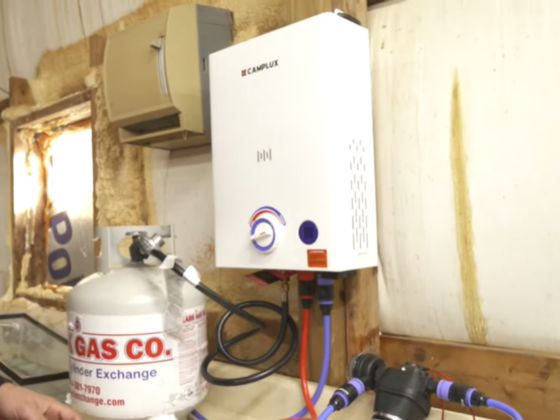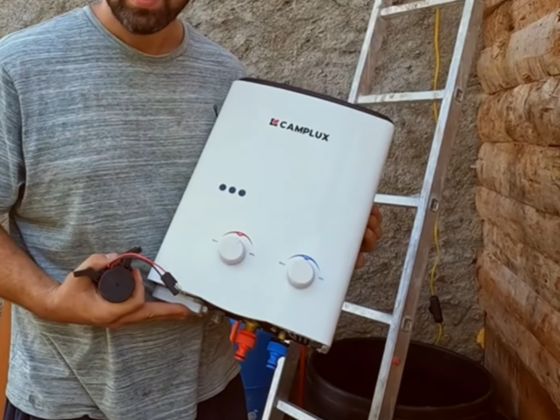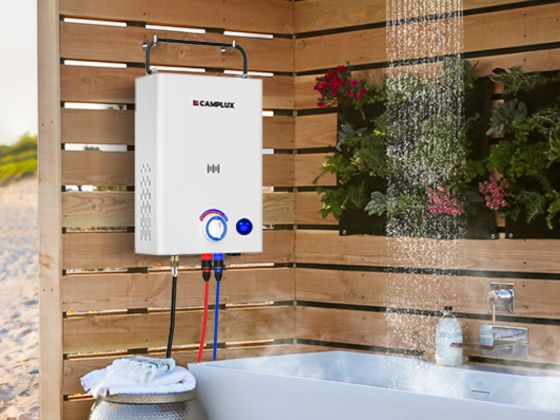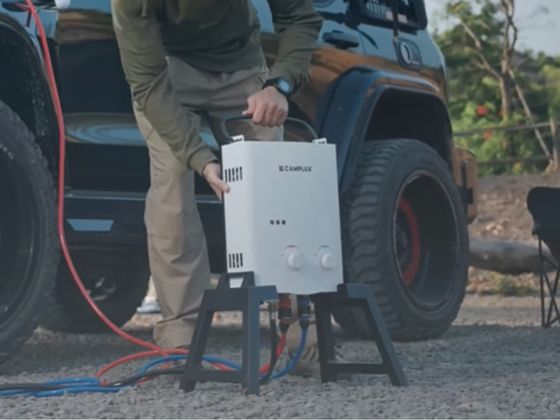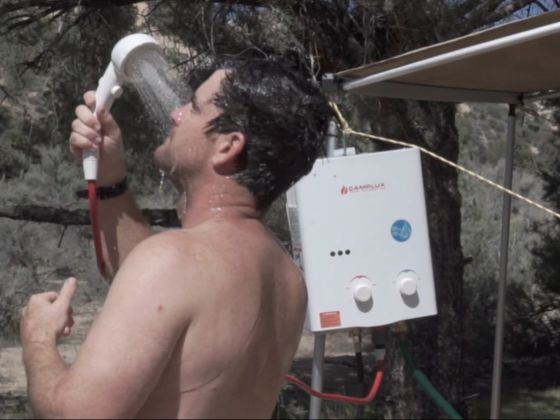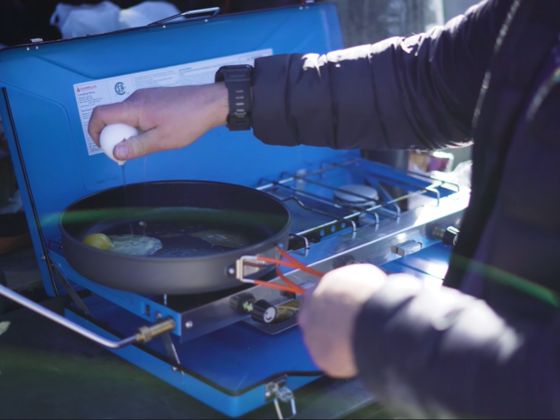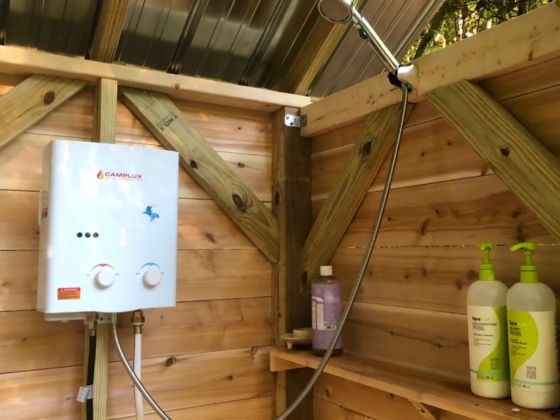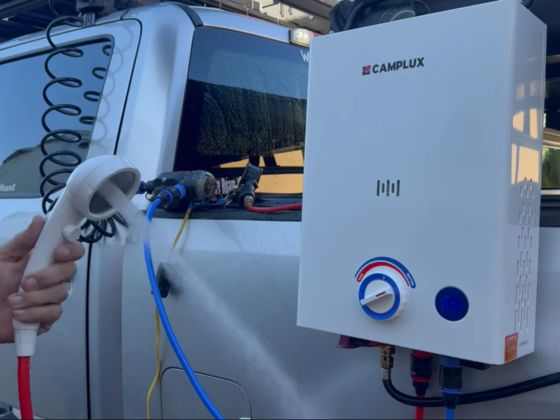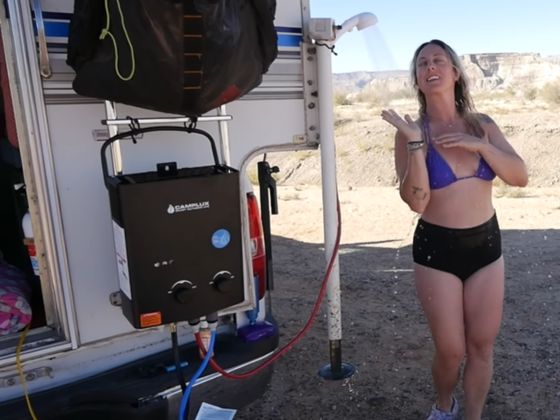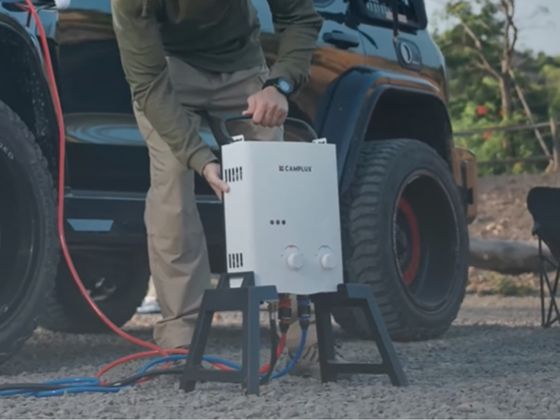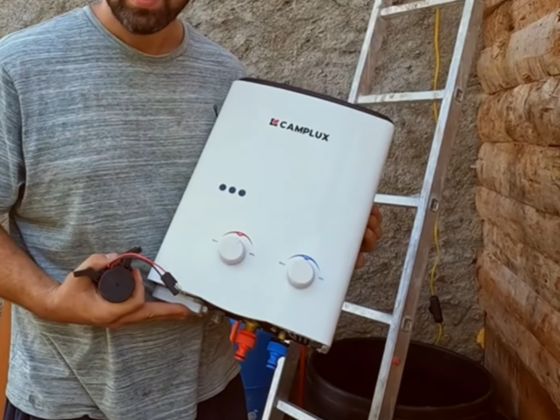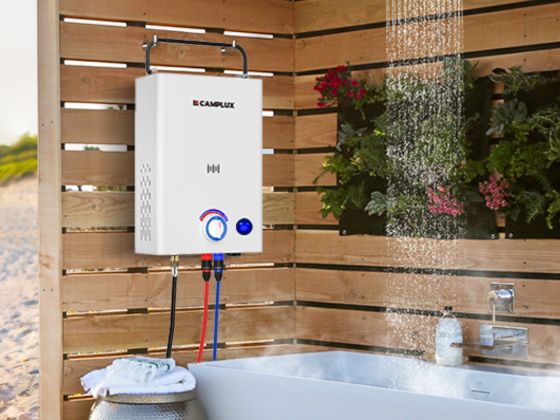You’ve packed the boards, the esky, and the sunscreen—now let’s make the beach feel like home with a proper hot rinse after a salty splash. This guide walks you through setting up, running, and looking after a portable hot water system safely and comfortably on Aussie beaches. It leans on Camplux-style setups (think BV Series like the BV158 8 L/min) because they’re purpose-built for campers, RVers, off-grid families, and folks living out in the sticks. Grab a cuppa, mate—we’ll keep it plain-English, with a few handy analogies so the tech bits are easy as.
Bottom Line First
At the coast, wind and salt are your main curveballs. To win the day, pair a Camplux portable LPG heater with stable freshwater (jerry cans are your best friend), set up out of the wind, and rinse your gear with freshwater when you’re done. A sweet-spot temperature is 38–40°C for most people. If a sea breeze kicks up, nudge the temperature up a touch or dial the water flow down for steadier warmth and better gas efficiency. A well-sorted kit looks like this: BV Series heater (e.g., BV158 8 L/min), 12V pump kit, inline pre-filter, shower tent, and a tidy bag to stow it all in your ute.
Who This Helps
If you love a day at the surf, weekender RV stays, or you’re running an off-grid setup near the coast, a portable heater makes the difference between “brrr” and “beauty.” Families with kids can rinse off sand in minutes. Divers and fishos can clean gear without dragging grit back to camp. Folks in remote beachside communities get a dependable wash-up even when amenities are scarce. A compact portable hot water system for camping also saves time—no more waiting for a camp kettle to boil while everyone’s freezing after a sunset swim.
Core Beach Setup Principles
Wind matters more than you think. Imagine wind as a giant hair dryer stealing heat from your water stream. If you can, tuck your heater behind a dune or vehicle so the breeze doesn’t blow straight into the burner. Keep the unit off the sand—use a platform, milk crate, or even a flat board. Give yourself safe clearances: away from tent sides, awnings, or scrub. And never run LPG appliances in enclosed spaces; you want fresh air for combustion and to avoid carbon monoxide build-up.
Salt and sand are sneaky. Salt speeds up corrosion, while sand is like confetti for filters and hoses. The fix is simple: prevention and rinse. Keep hoses off the grit, and at pack-down, give everything a freshwater shower, exactly like you’d rinse a surfboard.
Choosing the Right Unit (Plain-English)
Two specs matter most at the beach: flow rate (litres per minute) and heating capacity. Flow rate is just “tap size.” A higher number means a stronger stream of water. If you’ve got a bigger crew, winter surfing, or long hair to shampoo, you’ll appreciate 8 L/min—it helps keep water nicely warm even when the wind steals heat. Heating capacity (the system’s “muscle”) determines how strongly the unit can lift water temperature. More capacity equals steadier temps against cold inlet water and gusts.
A Camplux BV158 (8 L/min) is a cracking all-rounder for families and small groups. If your use is lighter—summer beach rinses for two—you can consider a smaller flow rate. Add a 12V pump kit for consistent pressure, an inline mesh filter to catch grit, quick-connects for fast setup, a shower tent for privacy and wind blocking, and hose extensions to keep the heater away from the splash zone.
If you’ve seen terms like On demand hot water system or Instant hot water system, that’s the same idea: the unit heats water as it flows, just like those speedy kettles in cafés, only this time the café is your campsite by the sea. For campers searching options, you might also come across outdoor gas hot water system or outdoor shower hot water system—they’re category phrases pointing to the same beach-friendly solution.
Getting Water at the Beach
Freshwater comes first. Don’t pump seawater—salt is hard on metal parts, can cause scale, and might irritate skin. Bring clean jerry cans or a freshwater drum and position them lower than the heater. A 12V pump likes a straightforward job: sucking from a lower container and pushing upward into the unit. Fit a simple inline filter on the inlet—think of it as a face mask for your heater, trapping sand and shell fragments before they make mischief.
Electrical basics matter when you’re running pumps. Use an inline fuse as a safety valve, keep connections dry, and separate your power from wet areas. If the pump sounds like it’s straining, check for kinks in hoses or a clogged filter, and ensure there’s no air lock by keeping inlet lines submerged.
Gas, Ignition, and Wind
Use an Australian-standard regulator and hoses, with the cylinder upright and shaded. Give hoses room—no tight bends or loops that can starve the unit of gas. Wind can blow the flame about, so light up on the leeward side (downwind) and fine-tune the temperature once the flame is stable. A shower tent or a simple wind screen builds a “micro-climate,” keeping the warmth in and the flame happy.
Set your temperature around 38–40°C to start. If the inlet water is chilly—south coast mornings, anyone?—increase temperature slightly or reduce flow. This small tweak keeps the water toasty without guzzling gas. If your cylinder gets frosty and output drops, swap bottles or let it warm in the shade—not in direct sun—before another run.
Family-Friendly Setup
A bit of planning goes a long way with little tackers underfoot. Set the temperature before opening the shower head so you don’t surprise anyone with a hot blast. Keep the heater itself a couple of metres from the wash area—out of the way of splashing kids and clumsy feet. Label or point out the on/off and temp controls so everyone knows the drill. After dark, pop a headlamp or lantern near the shower head and valves—nobody likes fumbling in the wind after a long arvo in the surf.
Environmental Etiquette on Aussie Beaches
We share beaches with dunes, wildlife, and other campers, so let’s be good neighbours. Discharge greywater away from dune vegetation and paths, and use biodegradable soap if you must suds up. Keep the wash area separate from cooking and avoid hot runoff across walkways where people could slip. Check local council rules—some spots restrict washing setups or require you to stay a certain distance from the dunes. During fire season, watch for restrictions that may apply to any flame-powered gear, even shielded ones.
Quick Build Checklist
Pick a leeward, raised spot so wind doesn’t bully your flame. Place freshwater containers, connect your 12V pump and the inline filter, then connect the LPG cylinder and regulator. Do a quick leak check—soapy water on joints will bubble if there’s a leak. Hook up inlet and outlet hoses with the shower head closed. Power the pump, ignite, and set 38–40°C. Test the stream for half a minute, then fine-tune temperature and flow. Hang the shower head, plan foot traffic so hoses aren’t trip lines, and you’re laughing.
Fast Troubleshooting
No ignition? The usual suspects are a closed or empty gas bottle, low batteries or a dodgy power feed to your pump, or not enough water pressure to trigger flow. Confirm the cylinder valve is open, check the regulator connections, and look for kinks in hoses.
Temperature yo-yoing? Wind is stealing your heat or the inlet water’s cold. Reduce the flow a notch or raise the temperature a smidge. If your gas cylinder is icing up and the flame weakens, swap bottles or allow recovery time.
Flame-out alarms? Wind might be blowing straight into the burner. Shift to a leeward spot or add a wind screen/shower tent. Make sure vents are clear and the shower head is open enough for steady flow.
After-Use Care in Salt Air
Treat your system like a favourite board—always rinse the salt off. Give the housing, fittings, and shower head a freshwater spray-down, then drain and air-dry hoses. Empty the filter of sand and let it dry before re-fitting. If the gear will sit for a while, do a short freshwater recirculation before storage so any salty traces inside are flushed. Stow it all in a carry bag away from direct sun, and it’ll be ready for next weekend’s mission.
Camplux-Leaning Recommendations
For families and small crews, a BV Series unit such as the BV158 8 L/min balances flow and heat capacity beautifully for coastal use. Add the Camplux 12V pump kit for steady pressure, a mesh pre-filter, and quick-connect fittings to make setup almost as fast as cracking a cold one. A shower tent is a quiet hero—more privacy and less wind-chill, so water feels warmer at a given setting. Toss in spare O-rings, an extra hose, a regulator, and a set of ignition batteries or backup power. It’s the sort of pack-out that turns a sandy scramble into a calm, five-minute routine.
A Plain-English Look at LPG Terms
You’ll see product names like Gas hot water system, gas hot water system camping, or hot water system lpg. All this means is the unit runs on LPG (liquefied petroleum gas)—the same stuff you’d use for your BBQ—so it’s ideal where there’s no mains power. When you see instant gas hot water system lpg or lpg gas hot water system, that’s just calling out that it heats water as it flows, on the spot, with LPG as the fuel. In practice, you get reliable hot water where you park the van or pitch the tent, and you don’t need to wait for a big tank to warm up.
If your search turns up “instant hot water system camping,” that’s the category most beach campers want: compact, quick, and simple. An outdoor gas hot water system or outdoor shower hot water system is the same concept aimed at outside use—perfect for rinsing salt, washing wetsuits, and giving the kids a warm clean-up before dinner.
Safety Must-Knows (Because We’re Not Cowboys)
Keep clearances. Combustion needs air and space, so avoid crowding the unit under low awnings or inside an annex. Store the cylinder upright and away from heat sources. Do a quick sniff test after connecting—if you smell gas, shut it down and recheck fittings. Keep electrical leads and pump connections dry, and put a fuse in your pump’s power line. And please don’t run the system while it’s unattended; it’s five minutes of comfort, not a backyard sprinkler.
Winter Beach Runs and Windy Days
Winter waves are magic, but the water’s icy and the wind has teeth. To stay comfy, reduce flow slightly so the heater lifts the temperature more per litre. Block the wind with your shower tent, set temp a notch higher, and put the unit itself in a sheltered pocket. If you’re showering back-to-back with a crew, consider two freshwater containers so you’re not waiting on a refill while everyone shivers, and rotate gas cylinders if you’re doing a long session—cold cylinders can starve the flame.
Real-World Use Cases
Surfer family of four? Sling a BV158 and a pair of 20-litre jerries into the ute. After a morning at the point, set up behind the vehicle, hang the shower head off the tailgate, and move through the line in ten-minute bursts. Dive team? Rinse regulators and wetsuits with the shower set to warm so you’re not shocking neoprene. Remote-area residents? Mount a simple stand beside your water tank and run a regular wash-up without trekking to shared facilities.
Quick “Why Camplux” for Beach Days
Camplux-style heaters are built for field life: quick ignition, adjustable flow, and sensible safety shutoffs. The BV Series hits that sweet spot of flow and heating muscle for windy shores, the accessories are practical (filters that actually catch sand, quick-connects you can handle with cold hands), and the whole kit packs tidy. It’s the sort of gear you trust to work when the southerly buster rolls in and the kids are getting cranky.
Wrap-Up
Beach days are better when the last thing you remember isn’t a shiver. With a Camplux portable LPG setup, freshwater on hand, and a wind-smart layout, you’ll turn a salty scramble into a warm, happy finish—no worries, mate. Set 38–40°C, keep the flow sensible in the breeze, rinse your gear with freshwater, and you’ll be ready for the next session before the tide turns.

